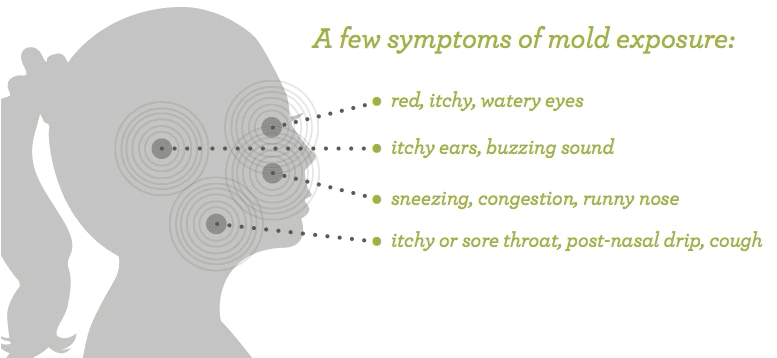Symptoms of Toxic Mold Exposure
Black Mold Symptoms
There are a few very common black mold symptoms. These could occur over time when residing where black mold exists or when there is an allergy already in place. Either way, black mold symptoms are are not so easily detectable, as most of the symptoms are similar to those of a common cold etc.
It is always a good idea to consult your doctor or a health care professional to determine what causes your symptoms.
Some of these symptoms include:
- Headaches
- Chronic fatigue
- Fever
- Eye irritation
- Sneezing
- Rashes
- Irritation to the mucous membranes of the mouth, nose and throat
- Chronic coughing

Black mold symptoms are even worse if the black mold exposure is severe, has lasted for a long time or if the individual has a mold allergy. Symptoms could include nausea, vomiting, as well as bleeding in the nose and lungs. Studies have also linked household mold exposure to depression.
The extent of black mold symptoms depends upon the number of spores inhaled and the duration of exposure. Black mold easily causes mold allergy symptoms, and symptoms likely persist until you get rid of the the black mold. Sometimes people don’t realize the health problems they’re having are actually black mold symptoms. Black mold is not something to ignore because it only gets worse the longer you ignore it.
Black Mold Causes and Risk Factors
Moisture combined with warmth in any environment is the major predecessor to black mold. Bathrooms, especially showers, are not the only prime locations for mold. The basement, especially if there is any water leakage, is another common area for black mold to flourish.
Another place to watch out for black mold is your HVAC or air conditioning system, which is constantly recycling air. If there is moisture in the air, this can lead to moisture inside the system, which can then lead to mold growth. In addition to the mold actually growing within the inside of the system itself, now you have a system that’s spewing out mold spores into your living space. This is why it’s so important to have your system checked and cleaned regularly, or even replaced if the system already contains mold.


